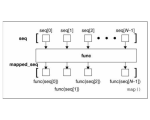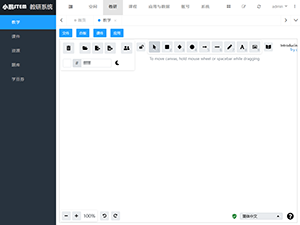Python 66 个内置函数!附代码
1.abs(x): 返回一个数的绝对值。
x = -10
print(abs(x)) # 输出:10 2.all(iterable): 如果可迭代对象中所有元素都为真,则返回True;否则返回False。
iterable = [True, True, False]
print(all(iterable)) # 输出:False 3.any(iterable): 如果可迭代对象中任何一个元素为真,则返回True;否则返回False。
iterable = [False, False, True]
print(any(iterable)) # 输出:True 4.bin(x): 将一个整数转换为二进制字符串。
x = 10
print(bin(x)) # 输出:0b1010 5.bool(x): 将一个值转换为布尔类型。
x = 0
print(bool(x)) # 输出:False 6.bytearray([source[, encoding[, errors]]]): 创建一个可变的字节数组对象。
source = b'Hello'
arr = bytearray(source)
print(arr) # 输出:bytearray(b'Hello') 7.bytes([source[, encoding[, errors]]]): 创建一个不可变的字节对象。
source = 'Hello'
b = bytes(source, encoding='utf-8')
print(b) # 输出:b'Hello' 8.callable(object): 检查一个对象是否可调用(函数、方法等)。
def func():
pass
print(callable(func)) # 输出:True 9.chr(i): 返回一个Unicode编码的整数对应的字符。
i = 65
print(chr(i)) # 输出:A 10.classmethod(func): 将一个普通方法转换为类方法。
class MyClass:
attr = 10
@classmethod
def class_method(cls):
print(cls.attr)
MyClass.class_method() # 输出:10 11.compile(source, filename, mode[, flags[, dont_inherit]]): 编译源代码为代码或AST对象。
source = "print('Hello, World!')"
code = compile(source, filename="", mode="exec")
exec(code) # 输出:Hello, World! 12.complex(real[, imag]): 创建一个复数。
real = 3
imag = 4
c = complex(real, imag)
print(c) # 输出:(3+4j) 13.delattr(object, name): 删除对象的属性。
class MyClass:
attr = 10
obj = MyClass()
delattr(obj, 'attr')
print(hasattr(obj, 'attr')) # 输出:False 14.dict([arg]): 创建一个字典。
d = dict(a=1, b=2, c=3)
print(d) # 输出:{'a': 1, 'b': 2, 'c': 3} 15.dir([object]): 返回一个包含对象所有属性和方法名的列表。
class MyClass:
attr = 10
def method(self):
pass
obj = MyClass()
print(dir(obj))16.divmod(a, b): 返回a除以b的商和余数。
a = 10
b = 3
result = divmod(a, b)
print(result) # 输出:(3, 1) 17.enumerate(iterable, start=0): 返回一个枚举对象,包含索引和值。
iterable = ['a', 'b', 'c']
for i, value in enumerate(iterable):
print(i, value) # 输出: # 0 a # 1 b # 2 c 18.eval(expression[, globals[, locals]]): 执行一个字符串表达式,并返回结果。
expression = "2 + 3"
result = eval(expression)
print(result) # 输出:5 19.exec(object[, globals[, locals]]): 执行Python代码。
code ="""
x = 5
if x > 0:
print("Positive")
else:
print("Non-positive")
""" exec(code) # 输出:Positive 20.filter(function, iterable): 使用给定的函数对可迭代对象进行过滤。
def is_positive(x):
return x > 0
numbers = [1, -2, 3, -4, 5]
result = filter(is_positive, numbers)
print(list(result)) # 输出:[1, 3, 5] 21.float(x): 将一个数转换为浮点数。
x = 10
print(float(x)) # 输出:10.0 22.format(value[, format_spec]): 格式化一个值。
value = 3.14159
result = format(value, ".2f")
print(result) # 输出:3.14 23.frozenset([iterable]): 创建一个不可变的集合。
iterable = [1, 2, 3]
fs = frozenset(iterable)
print(fs) # 输出:frozenset({1, 2, 3}) 24.getattr(object, name[, default]): 返回对象的属性值。
class MyClass:
attr = 10
obj = MyClass()
print(getattr(obj, 'attr')) # 输出:10 25.globals(): 返回当前全局作用域的字典。
print(globals())26.hasattr(object, name): 检查对象是否有指定的属性。
class MyClass:
attr = 10
obj = MyClass()
print(hasattr(obj, 'attr')) # 输出:True 27.hash(object): 返回对象的哈希值。
x = 10
print(hash(x))28.help([object]): 获取对象的帮助信息。
help(list)29.hex(x): 将一个整数转换为十六进制字符串。
x = 255
print(hex(x)) # 输出:0xff 30.id(object): 返回对象的唯一标识符。
x = 10
print(id(x))31.input([prompt]): 接收用户输入,并返回一个字符串。
name = input("请输入您的姓名:")
print("您好," + name + "!") 32.int(x=0): 将一个数转换为整数。
x = 3.14
print(int(x)) # 输出:3 33.isinstance(object, classinfo): 检查一个对象是否为指定类或类型元组的实例。
class MyClass:
pass
obj = MyClass()
print(isinstance(obj, MyClass)) # 输出:True 34.issubclass(class, classinfo): 检查一个类是否为另一个类的子类。
class Parent:
pass
class Child(Parent):
pass
print(issubclass(Child, Parent)) # 输出:True' 35.iter(iterable[, sentinel]): 创建一个迭代器对象。
iterable = [1, 2, 3]
iterator = iter(iterable)
print(next(iterator)) # 输出:1 36.len(s): 返回一个对象的长度(元素个数)。
s = "Hello"
print(len(s)) # 输出:5 37.list([iterable]): 创建一个列表。
iterable = (1, 2, 3)
lst = list(iterable)
print(lst) # 输出:[1, 2, 3] 38.locals(): 返回当前局部作用域的字典。
print(locals())39.map(function, iterable, ...): 对可迭代对象中的每个元素应用一个函数。
def square(x):
return x ** 2
numbers = [1, 2, 3, 4, 5]
result = map(square, numbers)
print(list(result)) # 输出:[1, 4, 9,16, 25] 40.max(iterable[, key]): 返回可迭代对象中的最大值。
numbers = [3, 1, 4, 2, 5]
print(max(numbers)) # 输出:5 41.memoryview(obj): 创建一个内存视图对象,用于访问其他对象的内存。
lst = [1, 2, 3, 4, 5]
mv = memoryview(lst)
print(mv[0]) # 输出:1 42.min(iterable[, key]): 返回可迭代对象中的最小值。
numbers = [3, 1, 4, 2, 5]
print(min(numbers)) # 输出:1 43.next(iterator[, default]): 返回迭代器中的下一个元素。
iterable = [1, 2, 3]
iterator = iter(iterable)
print(next(iterator)) # 输出:1 44.object(): 返回一个新的空对象。
obj = object()
print(obj)45.oct(x): 将一个整数转换为八进制字符串。
x = 8
print(oct(x)) # 输出:0o10 46.open(file, mode='r', buffering=-1, encoding=None, errors=None, newline=None, closefd=True, opener=None): 打开一个文件,并返回文件对象。
file = open("example.txt", "w")
file.write("Hello, World!")
file.close()47.ord(c): 返回一个字符的Unicode编码。
c = 'A'
print(ord(c)) # 输出:65 48.pow(x, y[, z]): 返回x的y次幂,如果提供z,则返回x的y次幂对z取模的结果。
x = 2
y = 3
z = 5
result = pow(x, y, z)
print(result) # 输出:3 49.print(objects, sep=' ', end='\n', file=sys.stdout, flush=False): 打印输出到控制台。
name = "Alice"
age = 25
print("My name is", name, "and I am", age, "years old.") # 输出:My name is Alice and I am 25 years old. 50.property(fget=None, fset=None, fdel=None, doc=None): 创建一个属性。
class MyClass:
def __init__(self):
self._attr = 0
@property
def attr(self):
return self._attr
@attr.setter
def attr(self, value):
self._attr = value
obj = MyClass()
obj.attr = 10
print(obj.attr) # 输出:10 51.range(stop): 返回一个包含从0到stop-1的整数序列的可迭代对象。
for i in range(5):
print(i) # 输出: # 0 # 1 # 2 # 3 # 4 52.repr(object): 返回一个对象的字符串表示形式。
s = "Hello"
print(repr(s)) # 输出:'Hello' **53.reversed(seq): **返回一个反向的迭代器对象。
seq = [1, 2, 3]
rev_seq = reversed(seq)
print(list(rev_seq)) # 输出:[3, 2, 1] 54.round(number[, ndigits]): 对一个数进行四舍五入。
x = 3.14159
print(round(x, 2)) # 输出:3.14 55.set([iterable]): 创建一个集合。
iterable = [1, 2, 3]
s = set(iterable)
print(s) # 输出:{1, 2, 3} 56.setattr(object, name, value): 设置对象的属性值。
class MyClass:
attr = 10
obj = MyClass()
setattr(obj, 'attr', 20)
print(obj.attr) # 输出:20 57.slice(stop): 创建一个切片对象,用于切片操作。
numbers = [1, 2, 3, 4, 5]
s = slice(2)
print(numbers[s]) # 输出:[1, 2] 58.sorted(iterable[, key][, reverse]): 返回一个排序后的列表。
numbers = [3, 1, 4, 2, 5]
sorted_numbers = sorted(numbers)
print(sorted_numbers) # 输出:[1, 2, 3, 4, 5] 59.staticmethod(function): 将一个函数转换为静态方法。
class MyClass:
@staticmethod
def my_method():
print("This is a static method.")
MyClass.my_method() # 输出:This is a static method. 60.str(object=''): 将一个对象转换为字符串。
x = 10
print(str(x)) # 输出:'10' 61.sum(iterable[, start]): 返回可迭代对象中所有元素的总和。
numbers = [1, 2, 3, 4, 5]
print(sum(numbers)) # 输出:15 62.super([type[, object-or-type]]): 返回父类的对象。
class Parent:
def __init__(self):
self.attr = 10
class Child(Parent):
def __init__(self):
super().__init__()
child = Child()
print(child.attr) # 输出:10 63.tuple([iterable]): 创建一个元组。
iterable = [1, 2, 3]
t = tuple(iterable)
print(t) # 输出:(1, 2, 3) 64.type(object): 返回一个对象的类型。
x = 10
print(type(x)) # 输出:<class 'int'> 65.vars([object]): 返回对象的属性和属性值的字典。
class MyClass:
attr = 10
obj = MyClass()
print(vars(obj)) # 输出:{'attr': 10} *66.zip(iterables): 将多个可迭代对象中对应位置的元素打包成元组,并返回一个由这些元组组成的可迭代对象。
numbers = [1, 2, 3]
letters = ['a', 'b', 'c']
zipped = zip(numbers, letters)
print(list(zipped)) # 输出:[(1, 'a'), (2, 'b'), (3, 'c')] 以上是Python中一些常用的内建函数的介绍和示例。希望能对你有所帮助!
涨知识

编码器
编码器是一种用来测量机械旋转或位移的传感器。它能够测量机械部件在旋转或直线运动时的位移位置或速度等信息,并将其转换成一系列电信号。
评论:
一文详尽 Python 函数式编程技术
本文对 Python 中的函数式编程技术进行了简单的入门介绍。

用Python优雅地编写LaTeX
latexify是用于生成 LaTeX 数学公式的 Python 库。LaTeX 是一种基于 ΤΕΧ 的排版系统,对于展示复杂的数学公式表现极为出色。
使用Python开发Android应用的简易教程
在过去,如果你想要开发Android应用,你需要掌握Java或者Kotlin等编程语言,但是现在,Python也可以用来开发Android应用了。
Thonny 4.1.3 下载
Thonny是一款免费的、开源的、易于使用的编程语言,旨在为初学者提供简单易用的编程环境。 Thonny的语法简洁易懂,同时还支持自动补全和语法高亮,使得编程变得更加便捷。
python bytearray转string
bytearray是一种可变的字节数组类型,而string是一种不可变的字符串类型。本文将介绍如何在Python中将bytearray转换为string,并提供代码示例。
使用Python创建3D模型(3D打印+乐高)
在设计一些机壳、玩具等3D项目时,往往需要精确的尺寸控制。徒手绘制对手残党不友好,使用CAD软件的自带命令又会增加学习成本,还不如使用万金油Python搞定。
Python Turtle库从入门到精通
本教程讲解如何使用Python turtle库进行编程,并介绍了一些非常重要的编程概念。您将知道如何处理变量初始化、循环、条件语句、缩进、列表和操作符。
手把手教你使用树莓派实现实时人脸检测
本文介绍了如何在树莓派上,使用 OpenCV 和 Python 完成人脸检测项目。该项目不仅描述了识别人脸所需要的具体步骤,同时还提供了很多扩展知识。此外,该项目并不需要读者了解详细的人脸识别理论知识,因此初学者也能轻松跟着步骤实现。
一文掌握Python中绘图库Turtle的使用
Turtle库是 Python中自带的用于绘制图形、图像的函数库。






